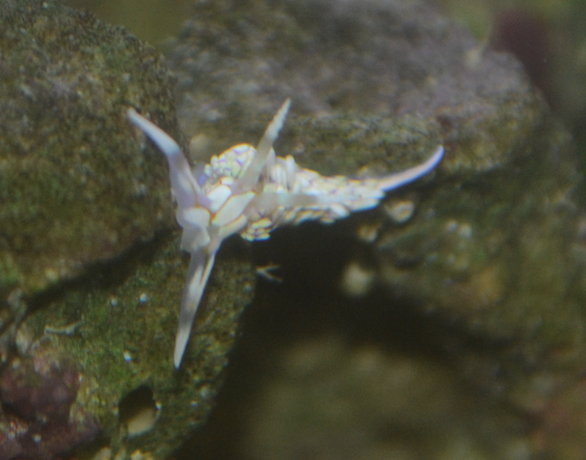Locomotion
Unlike some species of nudibranch which can use their foot to swirl and swim in the water, members of Godiva are limited to crawling along the substrate. They use their flat, flexible “foot” on the underside of the body to pull themselves along. The foot is composed of two distinct muscular parts; the thick, skirt-like outer muscle that remains in constant contact with the substrate, and the elongated central section that makes contact with the substrate in muscular contractions. The latter portion is termed the “sole” and is the primary mechanism of movement in most nudibranchs. The sole also contains specialized glands for secreting mucus, which forms a thin slimy layer for the nudibranch to slide across (Behrens, 2005). The encircling outer muscle is covered in fine cilia that beat to help the animal move over its slime trail. This outer portion of the foot is larger in smaller nudibranchs who are more reliant of the cilia for motion. Godiva fall into this category, being dwarfed by some of the larger sea hares.
When members of this species were released into the water in a lab setting they balled themselves up, extending their cerata, and drifted to the bottom of the tank. They made no move to swim, leading to the conclusion that their singular mode of transport is crawling.

|
| Figure 5. Godiva specimen traversing boulder in lab aquarium |
Rearing
Rearing is a behavior observed in this species when specimens came in contact with irritating or foreign substances such as stinging corals or probes. The individual lifts the upper portion of its body off the substrate, extending and waving its oral tentacles and rhinophores through the water. This behavior is likely used to adjust the position of the body to better sense food or potential threats (Behrens, 2005). |